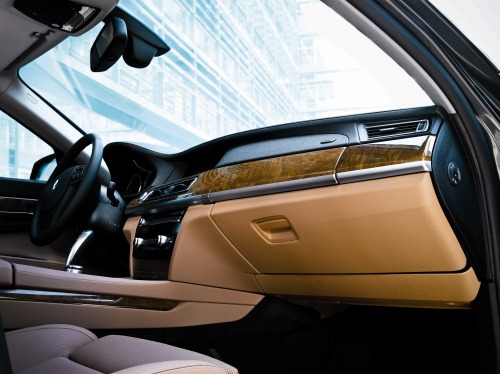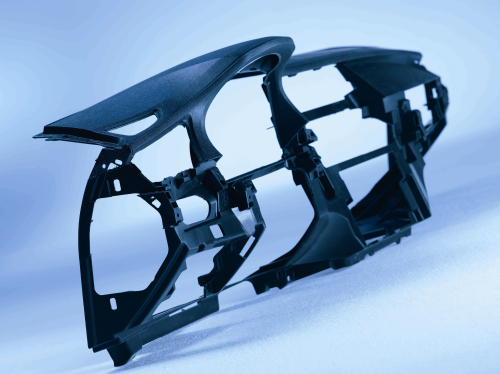

The lightweight carrier supports BMW’s drive to simplify production and lower costs while improving the fuel efficiency and environmental profile of its cars.
BMW’s choice of Borealis’ 20% long glass fibre reinforced polypropylene (PP) to replace its previous two-component dashboard construction is reported to have secured a number of advantages in addition to weight reduction.
The Nepol GB215HP grade is said to give significantly better warpage behaviour and therefore improved processing and lower system costs for BMW. The new single material solution requires less material to achieve the high stiffness and strength and excellent impact performance required for the dashboard carrier. PP is also recyclable.
Borealis says that Nepol GB215HP is the only long glass fibre reinforced polypropylene compatible with BMW’s automated integral foam injection technology, known as SGI. SGI enables BMW to produce lightweight parts which exhibit the same performance profile as compact material and heavier parts.
Borealis worked closely with BMW’s Landshut Innovation and Technology Centre to provide fine-tuning of the thermoplastic material for the injection moulding process and CAED support for processing and performance simulation.
“The long glass fibres of Nepol GB215HP provide for outstanding mechanical properties with the ease of processing and knock-on production efficiency benefits required for this dashboard application,” comments Harald Hammer, Vice President for business unit Mobility at Borealis.
“BMW is at the forefront of automotive development and is continuously exploring new ways to make its vehicles safer, lighter and more fuel efficient, and more environmentally-friendly," he adds. "By switching to Nepol GB215HP BMW fulfils its goal of improving component and vehicle performance and reducing production costs without compromising its very high standards of engineering.”





